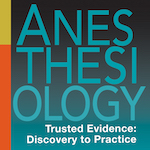Study: Single-syringe pump reduces OR propofol waste

Editor's Note Research published in the British Journal of Anaesthesia suggests that switching to a single syringe pump for both induction and maintenance of anesthesia could significantly cut propofol waste in operating rooms. EurekAlert! published the news October 29. Propofol waste accounts for up to 45% of medication waste in…
Music therapy reduces opioid use, anxiety in surgical patients

Editor's Note Music-based interventions administered preoperatively, intraoperatively, and postoperatively can significantly reduce postoperative opioid use and improve mood in patients undergoing same-day surgeries, according to research published October 15 in the Journal of Clinical Medicine. The single-center, prospective, randomized controlled trial evaluated 75 patients aged 18 to 80 who received…
Outpatient, ASC clinicians share perspectives on upcoming NOPAIN Act implementation

Editor's Note On October 14, Anesthesiology News published a monograph featuring clinical perspectives on how “those working in the trenches of postsurgical pain management” are preparing for the Non-Opioids Prevent Addiction in the Nation (NOPAIN) Act, which outlines new, separate Medicare reimbursement for certain non-opioid analgesics in outpatient and ambulatory…
Statistical models aim to improve surgical patient pain management

Editor's Note Researchers at MIT and Massachusetts General Hospital (MGH) have developed statistical models to improve how anesthesiologists manage unconscious pain, or nociception, during surgery, according to a September 23 report in News Medical. Derived from over 18,000 minutes of surgery data across 101 abdominal procedures, the models aim to…
Kidney transplant performed on awake patient

Editor's Note In a first for Northwestern Medicine, surgeons performed a kidney transplant on an awake patient, CBS News reported June 24. John Nicholas, 28, of Chicago, experienced no pain during the May 24 procedure, in which he received an organ from a childhood friend. He was discharged the next…
Wearables could help surgeons maintain healthy posture during lengthy procedures

Editor's Note Wearable technology is a useful means of mitigating the risk of musculoskeletal disorders in surgeons by providing biofeedback on posture during lengthy operations, according to a recent study in Journal of Nuerosurgery: Spine. In an April 22 report, AZO Sensors details how researchers from Baylor College of Medicine collaborated with…
Anesthesiologists push to improve pain control during caesarean delivery

Editor's Note A letter to the editor published April 10 in Anesthesiology, the official publication of the American Society of Anesthesiologists (ASA), calls attention to an official statement outlining best practices for ensuring all moms-to-be receive adequate pain management during planned or unexpected C-sections. The best practices are outlined in…
FDA warning: unapproved topical analgesics potentially dangerous

Editor's Note The US Food and Drug Administration (FDA) advises consumers to avoid topical analgesics marketed in violation of federal law by six different companies, including: TKTX Company: TKTX Numb Maximum Strength Pain Reliever, Mithra+ 10% Lidocaine, TKTX During Procedure Numbing Gel 40% and J-CAIN cream [LIDOCAINE] 29.9% SeeNext Venture,…
Two-question survey could help improve pain management, reduce opioid use

Editor's Note A simple, two-question survey could help identify patients most likely to develop chronic pain during recovery from surgery or injury and direct them toward proactive, holistic services that reduce reliance on opioids. NEJM Catalyst published the findings on March 20. Conducted by a research team from Duke University,…
Safe postop patient recovery: A day in the PACU leader role

Critical assessment and rapid response are essentials skills for perioperative staff members, and that goes double for perioperative leadership. Patient-centered leadership is a must. Like the OR, the postanesthesia care unit (PACU, formerly referred to as the “recovery room”) is a critical care area plagued by an influx of new…

 Free Daily News
Free Daily News